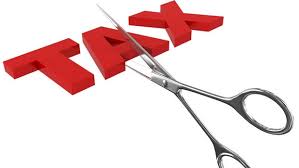
Still etched in my brain was the great income trust debacle that took place on Halloween of 2005. The Canadian conservative government won re-election promising not to change the tax preferred treatment of income trusts. That promise was broken and Canadian investors lost billions of dollars overnight. The value of my income trust holdings fell by 40% instantaneously.
Needless to say, as an investor in U.S. stocks, failure to appeal and replace Obamacare (ACA) makes me very nervous. Trump’s promise of massive tax cuts and infrastructure spending will need support from the Freedom Caucus (tea party) who want a border adjustment tax to offset some of the loss revenue.
There is also a complicated Senate rule that would prevent Democrats from blocking the tax bill. Under the rule, the bill cannot add to long-term budget deficits. That means every tax cut has to be offset by a similar tax increase or a spending cut.
‘‘Yes this does make tax reform more difficult,’’ said Ryan. ‘‘But it does not in any way make it impossible.’’
Nevertheless, Treasury Secretary Steven Mnuchin said Friday the administration plans to turn quickly to tax reform with the goal of getting an overhaul approved by Congress by August.
House Republicans have released a blueprint that outlines their goals for a tax overhaul. It would lower the top individual income tax rate from 39.6 percent to 33 percent, and reduce the number of tax brackets from seven to three. The House plan retains the mortgage interest deduction but repeals the deduction for state and local taxes.
However, nearly 34 million families claimed the mortgage interest deduction in 2016, reducing their tax bills by $65 billion. Also, more than 43 million families deducted their state and local income plus personal property taxes from their federal taxable income last year. The deduction reduced their federal tax bills by nearly $70 billion.
On the corporate side, the plan would repeal the 35 percent corporate income tax and replace it with a 20 percent tax on profits from selling imports and domestically produced goods and services consumed in the US. Exports would be exempt from the new tax. (border adjustment tax)
The general goal for Republicans is to lower income tax rates for individuals and corporations and make up the lost revenue by reducing exemptions, deductions and credits. Overhauling the tax code is actually hard because every tax break has a constituency and the biggest tax breaks are among the most popular.
Over the past week, some investors are starting to doubt that the tax cuts will get passed. The value of the U.S. dollar has weaken and ten year bond yields have fallen from 2.62% to 2.4%. Eight of the ten sectors that make up the S&P 500 were negative for the week. The biggest losers were U.S. financials (-3.72%), energy (-1.78%) industrials (-1.75%) and materials (-1.3%).
There is a lot of money on the sidelines that missed the Trump rally and are waiting for a stock market correction. I took some profits before the Canadian federal budget that hinted at tax increases so I also have some money to re-invest. The Canadian conservative government taught me a valuable lesson back in 2005. What government promises to do and what they actually do can have a negative affect on your investments.




